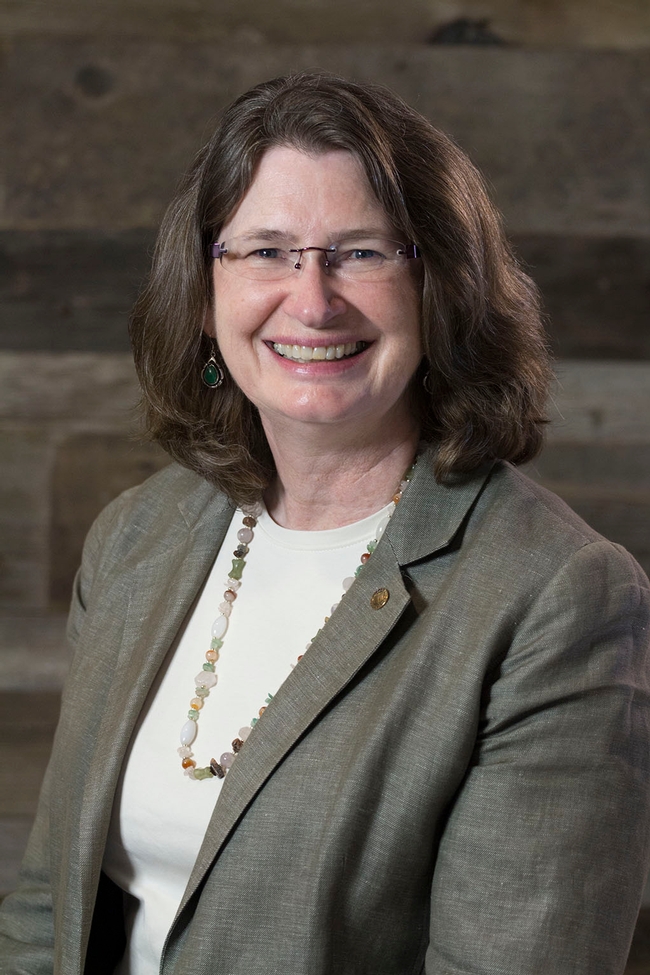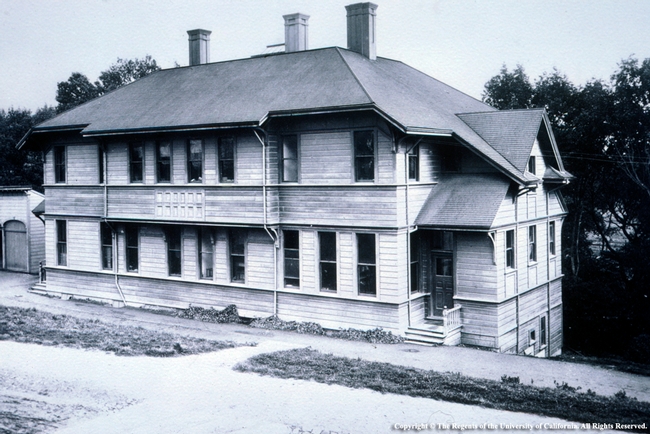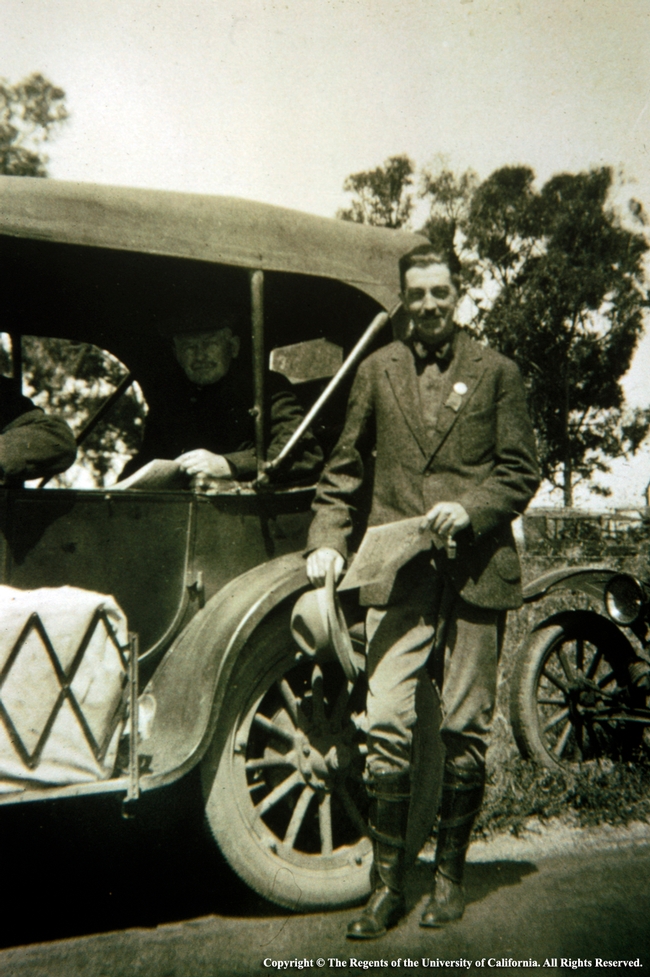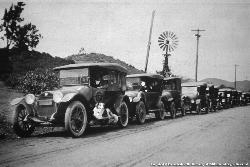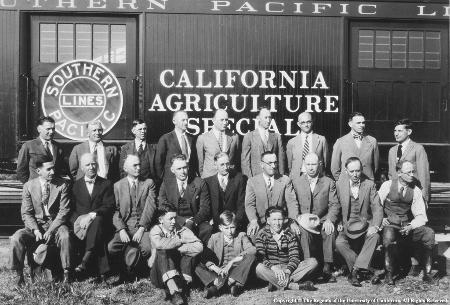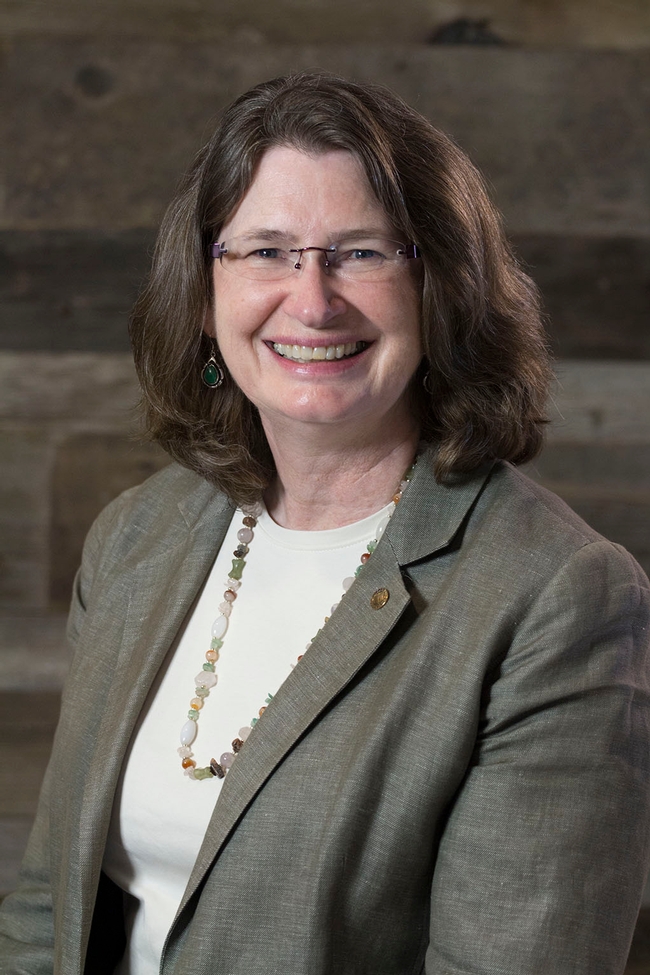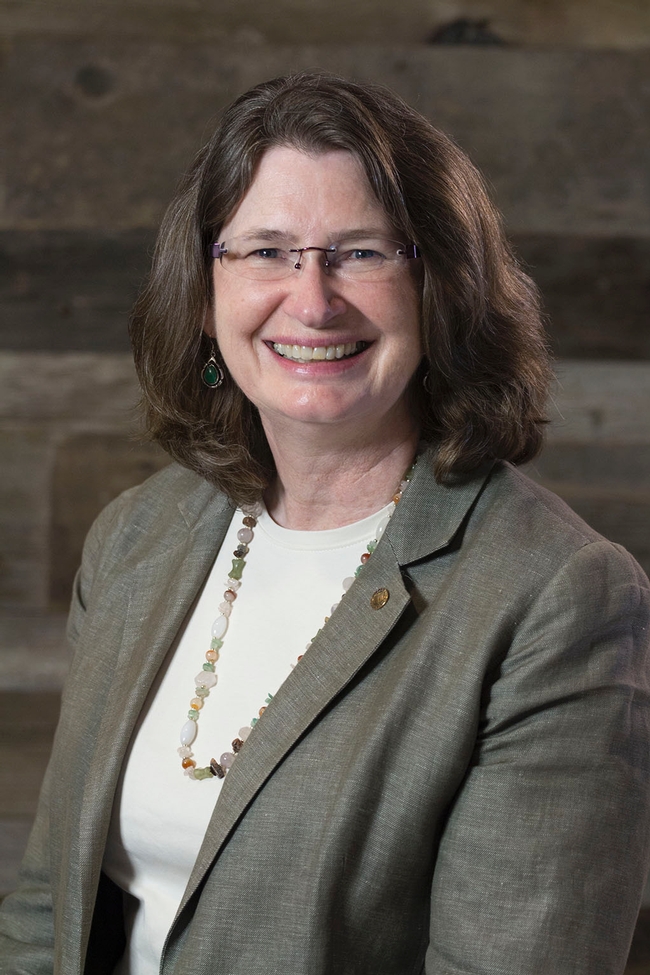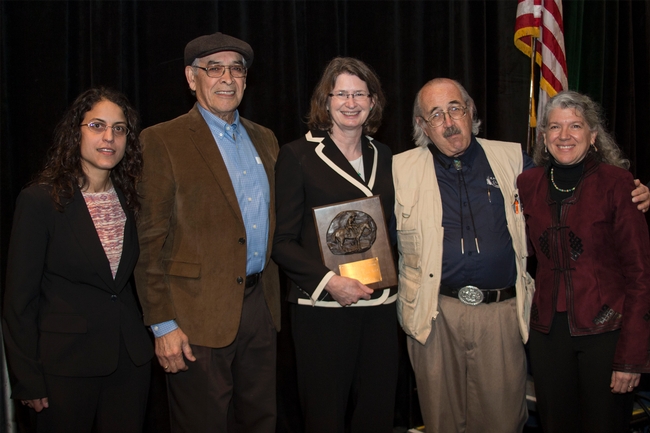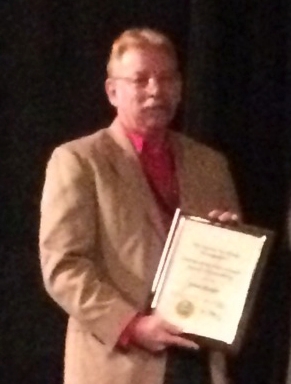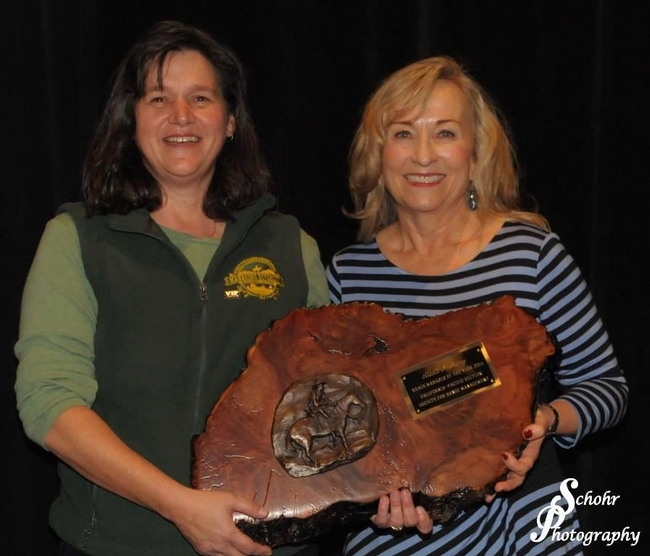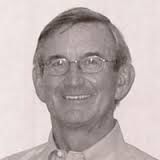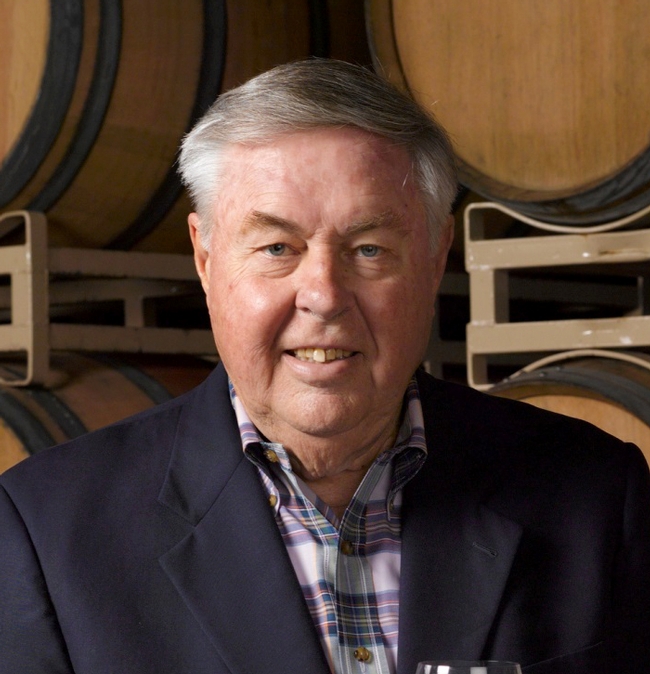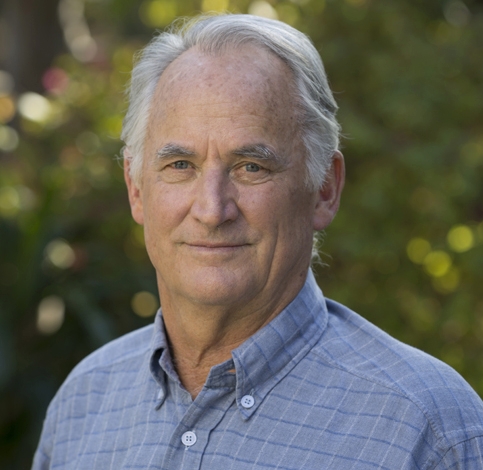Posts Tagged: Barbara Allen-Diaz
VP message to the ANR Community
Last year we celebrated the Centennial of Cooperative Extension, created by the Smith-Lever Act of 1914. It's been 148 years since the founding of the University of California and 129 years since creation of the Agricultural Experiment Station, which resulted from passage of the Hatch Act in 1887.
As I reflected on these events, and on my career, I thought it would be a good time to briefly outline the history of the Division of Agriculture and Natural Resources, how it was created and how it fits into the larger University of California.
As is common in the development of all great organizations, the history of the University of California is populated by larger-than-life figures as well as internal and external political battles for money, prestige and control. The history of agricultural science and teaching in the University and the development of UC ANR, as we know it today, was part and parcel to those struggles. It is a fascinating story and one that I encourage everyone to read about in books such as Science and Service, by Ann Foley Scheuring. I can only hit the highlights in this short article, but I hope that you will find this history as fascinating as I have.
The original University of California campus was at Berkeley. Tension between agricultural interests and agriculture-focused research on the one hand and the liberal arts and other sciences on the other has been part of our history from the beginning. Initially, the College of Agriculture within the new UC was politically very powerful, with a seat on the Regents, but agriculture programs had a paucity of students. It wasn't until such leaders as Edward Wickson, Eugene Hilgard, Thomas Hunt and others began to build the science base for agriculture that agricultural concerns began to take off at the University.
In 1905, the state legislature passed a bill to establish a University farm to ensure that UC was responding to agricultural needs. Although many sites were considered, Davisville (now called Davis) was chosen. The University Farm School offered a 3-year course open to any boy over the age of 15 with a grammar school education, shortly thereafter amended to a 2-year curriculum and a minimum age of 18. University students from Berkeley working toward a degree in agriculture were encouraged to attend the Farm School at Davis for a few months to add practical experience to their scientific work.
In 1920, several changes occurred affecting agricultural programs within the University. Until then, all agriculture faculty, research staff, and agricultural extension farm advisors held academic titles with the right to vote as members of the Academic Senate. When farm advisors exercised their voting rights on a particular issue over the objections of other Senate members, the Berkeley faculty moved to restrict Academic Senate membership to only those with academic teaching titles. This action removed Agricultural Extension faculty from the Academic Senate, and led to the creation of the Academic Assembly Council to represent extension academics. A second major change was the result of a reorganization of the College of Agriculture into four parts: the Department of Agriculture, for academic instruction leading to a university degree; the Agricultural Experiment Station (AES), for original research; the Agricultural Extension Service, for statewide public outreach; and the University Farm School. The Dean of the College of Agriculture would retain leadership over all four parts, but each part would also have its own head, and only the Department of Agriculture faculty would have Academic Senate membership.
Between 1952 and 1974, UC made numerous changes to its agriculture programs. Among the most notable were the conversion of Davis and Riverside to general campuses in the UC system and UCLA's elimination of its agricultural programs and transfer of its AES resources to Riverside.
In 1974, with another Regents' reorganization, the agriculture deans' reporting lines were moved from the Vice President of UC ANR to their respective campus chancellors. State AES funds were directed to the three campus chancellors, and AES faculties at Berkeley, Davis and Riverside now reported to their campus deans. The Agricultural Extension Service was renamed Cooperative Extension (CE) to better reflect its broadening social and economic purview across the state. The Vice President of UC ANR remained director of the AES and director of CE systemwide for UC, with all state CE funds and all federal AES and CE funds flowing to UC ANR.
Fast-forward to 2015: Today UC ANR remains as the vibrant, statewide academic research, education and outreach arm of UC, composed of more than 330 CE faculty. Some of these academics are located on campuses, some are at Research and Extension Centers and others are in county offices throughout the state. Cooperative Extension Specialists and Advisors work with AES colleagues and other campus-based colleagues to generate new knowledge and serve the needs of the people of California.
Tug-of-wars over money, prestige and control within the UC system have not disappeared, but the mission of UC and that of UCANR continue to ensure a thriving California with healthy and sustainable agricultural systems, healthy environments and healthy people. I, for one, am proud to serve this great organization!
VP message to the ANR community
Colleagues,
UC ANR always has a lot going on in the world of nutrition, but this month we seem as active as ever in this important space.
First came the announcement late in February that Pat Crawford, a UC ANR Cooperative Extension specialist who previously served as the director of the Atkins Center for Weight and Health at UC Berkeley, would be joining our Nutrition Policy Institute (NPI). Pat and her growing team of researchers will join NPI, which conducts research to inform, build, and strengthen nutrition-related policy, outreach and programs.
NPI then took center stage later in March when it distributed a national news release urging the U.S. Department of Agriculture to make water “first for thirst.” What this means, essentially, is that NPI is taking a strong stand in asking the federal government to promote plain drinking water as the healthiest beverage. We've even asked the USDA to add a symbol for water to its “MyPlate” graphic.
NPI developed a “Take Action!” page on its website with easy-to-follow guidelines for submitting comments on the Dietary Guidelines for Americans. For those of you who might be interested in sharing with your friends and family, the “Take Action!” web page is located at http://npi.ucanr.edu/water.
Finally, on March 24, the Sacramento Bee published this op-ed piece penned by UC ANR Cooperative Extension advisor Rachel Surls from Los Angeles County. Working with our communications staff, Rachel writes eloquently about urban agriculture and cites several examples of how urban farming is working well in cities across our state. She clearly shows how those case studies support UC's Global Food Initiative and its goals.
As always, I appreciate the work all of you do on behalf of UC ANR and, by extension, for the people of California. Thank you!
Barbara
VP message to the ANR community
Colleagues,
As we near the end of February and look ahead to the spring, there continues to be a tremendous amount of activity and good work going on within ANR. Thank you, as always, for your efforts.
This month, I'd like to focus on an event that likely hasn't hit your radar just yet – the Strategic Initiatives Conference scheduled to take place Oct. 5-7. Our Strategic Initiatives (SI) are a vital component of ANR's overall vision, and I truly hope as many of you as possible can take part in the conference to gain an appreciation for what's already been accomplished with the SIs and to get inspired for what's to come.
The conference will offer a rare opportunity for the entire SI community to come together. The organizing team is planning individual SI meetings, in-service training, and meetings with program teams and workgroups, among other activities. The individual SI gatherings give us a chance to discuss the broader direction of SI programmatic activities within each topic area.
We'll kick the conference off with a welcome dinner on the 5th. Hopefully, it will be an opportunity for all of you to meet the new VP of ANR.
One portion of the conference will be open to legislators and their aides. We'll focus that session on highlighting to our elected officials the progress made by each of the SIs, demonstrating to them our effective use of grant monies.
You'll soon see a save-the-date email, but it's not too early to get this important event on your calendars now.
Also, don't forget that the Work Environment workshops begin on Monday, March 2. Please attend the one in your region to engage in a lively discussion about the results of the Work Environment Assessment and how you can help the Division move forward.
I hope you'll enjoy this edition of ANR Report. As always, it's packed with news and features, including information on a bioeconomy conference coming up in April, new software and licenses available to UC ANR staff and academics, a poultry website offering answers about backyard chickens, the updated California Master Gardener Handbook, and other topics.
Barbara Allen-Diaz
Vice President
ANR members honored with range awards
The Society for Range Management bestowed its highest honor, the Frederic G. Renner Award, on VP Barbara Allen-Diaz on Feb. 2 at the society's annual meeting in Sacramento. The society gives the premier award annually to members who have sustained accomplishments or contributions to rangeland management during the last 10 years. Allen-Diaz is the first female to receive the award.
“Barbara has a record of outstanding research productivity that has affected the understanding and management of California rangelands and has had global impacts,” said Amy Ganguli, assistant professor of range science at New Mexico State University.
UC ANR Cooperative Extension advisors John Harper of Mendocino County and Stephanie Larson of Sonoma County were among the 2015 Outstanding Achievement Award winners. Sheila Barry, UC ANR Cooperative Extension director and advisor in Santa Clara County, won the 2014 Range Manager of the Year award for the Cal Pacific Section of the Society for Range Management.
More than 1,300 people attended the Society for Range Management annual meeting held Jan. 31 – Feb. 6.
Barry co-chaired the conference planning committee with Alan Bower of the U.S. Department of Agriculture. Several other ANR members also participated in planning the meeting: Larry Forero, Theresa Becchetti, Holly George, Jim Sullins, David Lile, Royce Larsen, Roger Ingram, Morgan Doran, Jeremy James, Mel George, Fadzayi Mashari, Julie Finzel, Jeff Stackhouse, Scott Oneto, Harper and Larson. Even more participated as speakers and attendees.
For conference highlights, select “social media” in the SRM 2015 Managing Diversity guidebook app (Redemption code “SRM2015”), created by Harper, or search for #SRM2015 on Twitter and Facebook.
PAC discusses water and food initiative
On Dec. 15, President Napolitano met with the UC President's Advisory Commission on Agriculture and Natural Resources in Oakland for their biannual meeting. A well-attended meeting, PAC members from all across California, including three new members: Jack Hanson, owner of Willow Creek Ranch; Jerry Lohr, founder and president of J. Lohr Vineyards and Wines, and Miles Reiter, CEO and chairman of Driscoll's, weathered the storm to join President Napolitano, VP Barbara Allen-Diaz, PAC Chair Don Bransford and the deans from UC Berkeley CNR, UC Davis CAES, UC Davis School of Vet Med and UC Riverside CNAS for a lively discussion on agriculture and natural resources research and programs at ANR and the four colleges, as well as the UC systemwide initiatives.
President Napolitano gave updates on the Global Food Initiative and tuition and discussed the importance of both to the state of California. Ever engaging, Napolitano solicited suggestions and opinions from the commissioners, encouraged an open dialogue on her many initiatives and discussed her most recent decision to increase tuition. For their part, the commissioners offered the president their assistance and support.
Allen-Diaz, who co-chaired the meeting with Bransford, provided the PAC members with a brief update on the state of ANR and her plans for the future. Following her address, AVP Bill Frost announced that ANR will be hiring 29 UCCE advisors and 16 UCCE specialists distributed around the state over the next two years, which was well-received news.
To round out the session, the industry leaders had an opportunity to learn more about ANR's California Institute for Water Resources and the newly formed Nutrition Policy Institute (NPI). Director Doug Parker told the group what UC has been doing to help Californians cope with the drought. Director Lorrene Ritchie explained the Nutrition Policy Institute's mission, their work on the UC Global Food Initiative, and NPI's current collaboration with PAC member Rodney Taylor on the Fruit and Veggie Hub. The presentations provided the commissioners and President Napolitano a better understanding of the depth of ANR's research and the extent to which ANR's research positively impacts individuals and communities in California.
After the meeting, the president hosted a private reception for the commissioners at her home.
Dan Dooley, who was a charter PAC member and former VP of ANR, attended the meeting and reception. PAC members thanked him for his leadership over the years. Dooley retired from UC as senior VP for External Relations on Jan. 2.
The PAC will meet again in the spring.

